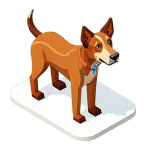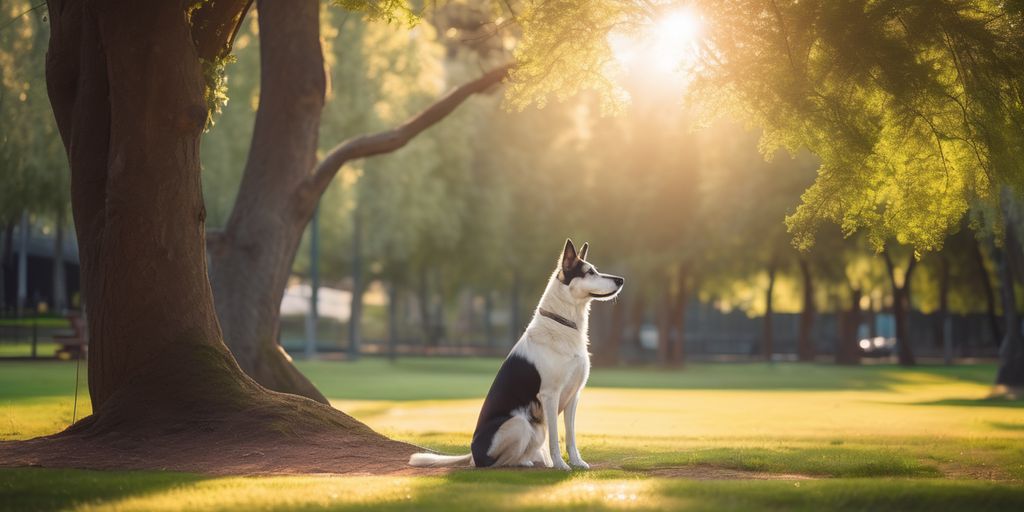Dog aggression can be a challenging issue, but with the right strategies, you can help your dog become more peaceful and well-behaved. This guide will provide you with essential tips and techniques to prevent aggression and create a harmonious environment for both you and your pet.
Key Takeaways
- Early socialization is crucial for preventing aggression in dogs.
- Positive reinforcement is more effective than punishment in training.
- Recognizing early signs of aggression can help prevent escalation.
- Creating a calm environment reduces stress and aggression in dogs.
- Seeking professional help is important when dealing with severe aggression.
Understanding Dog Aggression
Dog aggression can be a tough issue to handle, but understanding it is the first step to finding a solution. Aggression in dogs can come from many sources, such as fear, territorial instincts, or frustration. By learning about these triggers and recognizing the signs, you can help your dog become a more peaceful companion.
Socialization: The Key to Preventing Aggression
Socializing your dog is crucial for preventing aggression. By exposing your dog to various people, animals, and environments, you help them become more adaptable and less fearful. This reduces the chances of aggressive behavior in unfamiliar situations. Ongoing socialization is essential for a well-rounded and peaceful pet.
Positive Reinforcement Strategies
Positive reinforcement is a powerful tool for shaping your dog's behavior. By rewarding good behavior, you encourage your dog to repeat those actions. This method not only helps in managing aggression but also strengthens the bond between you and your pet.
Creating a Safe and Calm Environment
Identifying and Minimizing Triggers
Understanding what sets off your dog's aggression is the first step. Common triggers include loud noises, unfamiliar animals, or even certain smells. Identifying these triggers can help you create a more peaceful home. Once you know what bothers your dog, you can take steps to minimize these stressors. For example, if your dog is scared of loud noises, try to keep the environment as quiet as possible.
Designing Safe Spaces for Your Dog
Every dog needs a place where they can feel safe and relaxed. This could be a cozy corner with their favorite bed and toys. Make sure this space is away from high-traffic areas in your home. A safe space acts as a buffer against stress and can significantly reduce aggressive episodes.
Implementing Gradual Exposure Techniques
Gradual exposure is a technique where you slowly introduce your dog to the things that trigger their aggression. Start with low-intensity exposure and gradually increase it as your dog becomes more comfortable. This method helps your dog get used to the trigger without feeling overwhelmed. Patience and consistency are key here.
Celebrate the small victories – maybe today they growled less at a stranger, or took a treat gently without snapping. These moments are huge in the world of dog training.
When to Seek Professional Help
Recognizing When You Need Assistance
Sometimes, despite your best efforts, your dog's aggressive behavior might not improve. If your dog shows severe aggression or if you feel unsafe, it's time to seek professional help. Don't wait for the situation to escalate; early intervention can make a big difference.
Finding a Qualified Trainer
Look for a certified dog trainer or behaviorist who has experience dealing with aggression. You can ask for recommendations from your vet or check online reviews. Make sure the trainer uses positive reinforcement techniques, as these are more effective and humane.
Working with a Veterinary Behaviorist
In some cases, a veterinary behaviorist might be necessary. These professionals are vets with specialized training in animal behavior. They can provide a comprehensive plan that may include behavior modification techniques and, if needed, medication to help manage your dog's aggression.
Seeking professional help is a proactive step towards ensuring the safety and well-being of both you and your furry friend. Don't hesitate to reach out—it's a sign of strength and love for your pet.
Effective Communication with Your Dog
Understanding Canine Body Language
One of the most essential parts of communicating with your dog is learning to read their body language. Dogs use a variety of physical signals to express their feelings. Recognizing these cues can help you respond appropriately.
- Tail Wagging: Not all tail wags mean happiness. A high, fast wag might indicate excitement, while a low wag can signal uncertainty or submission.
- Ear Position: Ears up and forward suggest curiosity, while ears pulled back may indicate fear or submission.
- Facial Expressions: A relaxed mouth and soft eyes indicate contentment, whereas a stiff jaw and hard stare might suggest aggression or discomfort.
Using Commands to Manage Behavior
While dogs may not understand every word we say, they can learn to respond to specific commands. Here are some tips to enhance verbal communication:
- Use Consistent Commands: Choose simple, distinct commands like “sit,” “stay,” and “come.” Consistency helps your dog recognize and respond to these commands.
- Keep Your Tone Positive: Use an upbeat tone to encourage good behavior. Avoid harsh tones that might intimidate your dog.
- Practice Regularly: Incorporate training sessions into daily activities to reinforce commands and make them second nature.
Building Trust Through Consistent Interaction
Effective communication is built on trust. Here are ways to strengthen your bond with your dog:
- Engage in Play: Regular playtime fosters a positive relationship and emphasizes cooperation and joy.
- Positive Reinforcement: Reward desired behaviors with treats or praise. This not only encourages good behavior but also strengthens your bond.
- Be Patient: Every dog learns at their own pace. Patience is key to developing a trusting relationship.
Remember, effective communication leads to a happier, healthier environment for both you and your pet. By understanding and responding to your dog's signals, you can build a strong, trusting relationship.
Conclusion
Preventing dog aggression is all about patience, understanding, and consistent training. By focusing on positive reinforcement and creating a safe, nurturing environment, you can help your dog feel more secure and less likely to act out aggressively. Remember, building trust and a strong bond with your dog takes time, but the rewards are well worth the effort. With these tips and techniques, you’re well on your way to a more peaceful and happy life with your furry friend. Keep up the good work, and enjoy the journey with your loyal companion!
Frequently Asked Questions
What are common triggers of dog aggression?
Common triggers include fear, territorial behavior, and lack of socialization. Loud noises, unfamiliar people, and other animals can also provoke aggression.
How can I recognize early signs of aggression in my dog?
Look for signs like growling, stiff body posture, direct staring, and raised fur. Early intervention is key to preventing aggressive behavior.
Is dog aggression influenced by genetics or environment?
Both genetics and environment play a role. A dog's breed may have predispositions, but experiences and training significantly shape behavior.
What are effective socialization techniques to prevent aggression?
Expose your dog to different people, places, and other dogs gradually and positively. Reward calm behavior to build positive associations.
How does positive reinforcement help in managing aggression?
Positive reinforcement involves rewarding good behavior with treats, praise, or play. This encourages your dog to repeat those behaviors instead of aggressive ones.
When should I seek professional help for my dog's aggression?
If your dog's aggression is severe or you're unable to manage it on your own, it's best to consult a qualified trainer or veterinary behaviorist.


